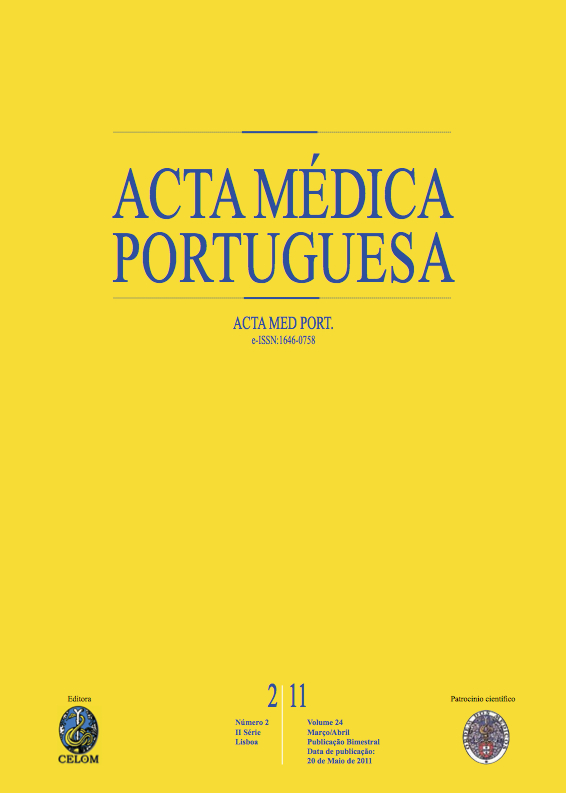Temporal arteritis: a confounding diagnosis.
DOI:
https://doi.org/10.20344/amp.1610Abstract
Temporal arteritis is a chronic vasculitis of medium and large-size vessels and involves particularly extracranial branches of the aortic arch arteries. Authors report the case of a 73-year-old woman who presented to the hospital after looking for medical counselling three times because of unexplained fever, fatigue, nonproductive cough, and throat pain. She already completed two antibiotic prescriptions. This 3-week history completed in the last days with temporal bilateral headache and visual disturbance. Physical examination was notable for fever and bilateral thickened tender temporal arteries. The erythrocyte sedimentation rate was elevated. A biopsy specimen of the left temporal artery confirmed the diagnosis of giant cell temporal arteritis. The diagnostic suspicion of this disease is clinical and usually simple, but in 10% there are throat pain, non-productive cough and fever which are misunderstood as superior respiratory tract infections leading to diagnosis and treatment delay.Downloads
Downloads
How to Cite
Issue
Section
License
All the articles published in the AMP are open access and comply with the requirements of funding agencies or academic institutions. The AMP is governed by the terms of the Creative Commons ‘Attribution – Non-Commercial Use - (CC-BY-NC)’ license, regarding the use by third parties.
It is the author’s responsibility to obtain approval for the reproduction of figures, tables, etc. from other publications.
Upon acceptance of an article for publication, the authors will be asked to complete the ICMJE “Copyright Liability and Copyright Sharing Statement “(http://www.actamedicaportuguesa.com/info/AMP-NormasPublicacao.pdf) and the “Declaration of Potential Conflicts of Interest” (http:// www.icmje.org/conflicts-of-interest). An e-mail will be sent to the corresponding author to acknowledge receipt of the manuscript.
After publication, the authors are authorised to make their articles available in repositories of their institutions of origin, as long as they always mention where they were published and according to the Creative Commons license.









